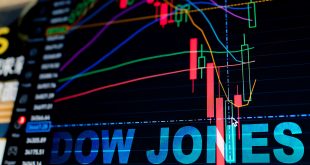Citigroup (NYSE: C) posted a significant 25% year-on-year rise in net income for the second quarter, driven by windfall earnings from volatile markets. The bank’s net income reached $4 billion, or $1.96 per share, for the three months ending June 30.
Key Financial Metrics:
- Revenue increased by 8% to $21.7 billion, marking a second-quarter record for Citigroup’s services, wealth management, and U.S. personal banking businesses.
- Markets revenue surged 16%, hitting $5.9 billion, thanks to market turbulence driven by U.S. tariffs and broader economic uncertainty.
- Investment banking remained subdued through much of the quarter, but rebounded in June, propelled by major IPOs and multi-billion-dollar buyouts. Investment banking fees climbed 13%, while overall banking revenue grew nearly 19% to $1.9 billion.
Key Deals and Activities:
- Citigroup played a leading role in the $1.05 billion IPO of Circle, the stablecoin issuer, and the $650 million listing of eToro, a retail trading platform.
- The bank also provided advisory services to Charter Communications on its $21.9 billion acquisition of Cox Communications.
Outlook and Market Conditions:
- Citigroup’s Wall Street businesses have benefited from recent overhauls under CEO Jane Fraser, alongside strengthening in the banking division under Viswas Raghavan.
- Executives remain optimistic about the second half of the year, citing resilient IPO and deal pipelines amid easing economic uncertainty.
- Despite strong financial performance, Citigroup continues to work on addressing regulatory issues, including past risk management and data governance deficiencies, stemming from the $900 million error involving Revlon lenders in 2020.
Stock Performance:
- Citigroup’s shares have risen 24.3% year-to-date, significantly outperforming the S&P 500’s 6.6% gain.
- Despite recent progress, Citi’s stock continues to trade at a discount to its Wall Street peers, though its price-to-book ratio has improved over the past year.
The bank’s strong second-quarter results underscore its ability to capitalize on market volatility, positioning it well for the remainder of the year despite ongoing regulatory challenges.
 Noor Trends News, Technical Analysis, Educational Tools and Recommendations
Noor Trends News, Technical Analysis, Educational Tools and Recommendations





